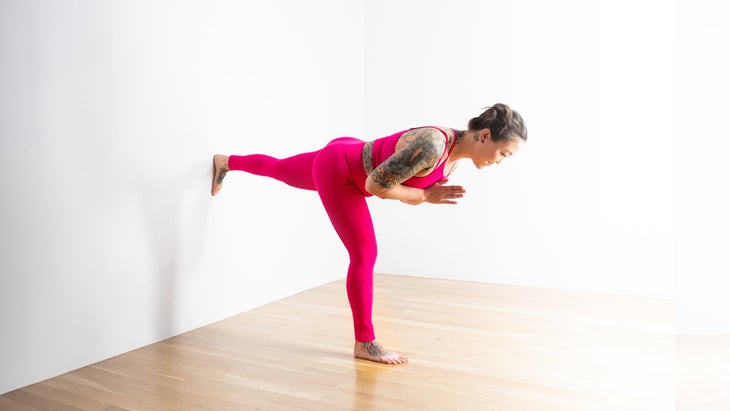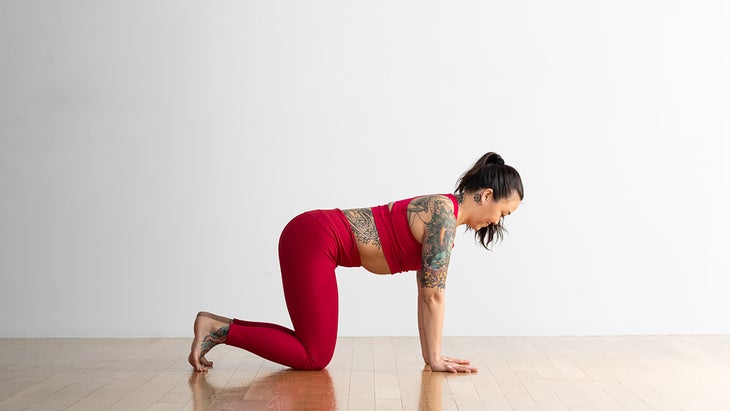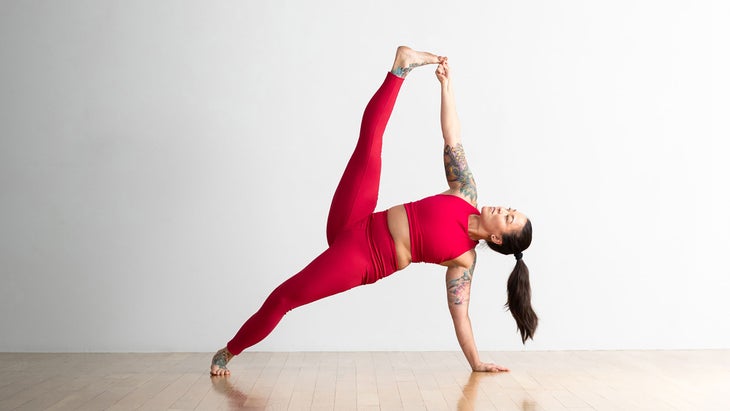“], “filter”: { “nextExceptions”: “img, blockquote, div”, “nextContainsExceptions”: “img, blockquote, a.btn, a.o-button”} }”>
Heading out the door? Read this article on the new Outside+ app available now on iOS devices for members!
>”,”name”:”in-content-cta”,”type”:”link”}}”>Download the app.
There tends to be a disproportionate emphasis on (some might say obsession with) stretching tight hips, especially among athletes and anyone who practices yoga. Not a lot of us think to ask is, “How do I strengthen my hips?” And there’s a cost to this oversight.
If this sounds like it could be you, your workouts probably need to counterbalance all that stretching. Numerous studies indicate that these imbalances and weaknesses in the hip muscles increase the risk of lower extremity injuries, especially among runners. Enter hip-strengthening exercises.
Why You Need Hip-Strengthening Exercises
The hips themselves are fairly bony articulations consisting of ball-and-socket joints comprising the “ball” of the femur sitting in the “socket” of the pelvis. So any conversations about strengthening the hips need to address all of the muscles that surround and support the stability of the joint, including:
- Glutes (gluteus maximus, gluteus medius, gluteus minimus)
- Piriformis muscle
- Hip flexors (including the iliopsoas)
- Hamstrings
- Quads
- Hip rotators (gemellus and obturator muscles)
- Pelvic floor muscles
Addressing all of these muscle groups through hip stability exercises can help prevent muscle imbalances and ensure that your hips and pelvis can maneuver through stable movement in all three planes of motion:
- forward flexion and backward extension
- abduction (out to the side) and adduction (back toward center)
- internal and external rotation
This supports the hips as they bear the demanding responsibility of supporting the upper body while facilitating the movement of the lower body.
The 7 Best Types of Hip-Strengthening Exercises in Yoga
You can practice these effective hip-strengthening exercises, including yoga poses and bodyweight training, as a comprehensive hip workout. Or you can draw on individual exercises that target hip-strengthening movements that are missing in your existing training. Although the focus in yoga is usually on practicing these moves in a static fashion, you can make a pose dynamic by slowly transitioning in and out of it.
1. Chair Pose + Single-Leg Chair Pose
This challenging yoga pose belongs in any strengthening sequence as it works the entire lower body. You can intensify the hip-strengthening exercise known as Chair Pose by turning it into a single-leg challenge. What’s magical about this modification is that by standing on one leg at a time, you build functional strength and stability in each leg while challenging your hips and pelvis to stay level even when only one side is weight-bearing, replicating the demands of running, hiking, and walking down stairs.
Start by lift one leg off the floor. Squeeze your glutes and engage your core to engage the hip muscles to create more stability. You can rest one or both hands on a wall or back of a chair to help with balance as you build hip stability and then transition to freestanding. Start with holding for 5 seconds. Build up to 30 seconds per leg.
Further challenge your muscles by lowering bending your standing knee or progress it even further by creating a figure-4 shape, resting the lifted ankle on the opposite thigh and sinking your hips back in a squat. Hold the lowered posture for a full breath and then pressing back up to standing as you inhale, making it a dynamic exercise. Do 5-10 slow, controlled reps. Switch legs.

2. Single-Leg Balancing Poses
Any time you balance on one leg, you build hip stability by strengthening the easily overlooked gluteus medius muscle and hip rotators. Plus, you strengthen the smaller, easily overlooked stabilizing muscles around the hips. Also, single-leg balancing poses challenge muscles that might be weaker in one leg but are otherwise compensated for with both legs working.
Include the following balancing poses in your hip-strengthening workouts, relying on a wall or chair as support if needed. As your balance improves, try closing your eyes to further challenge your core, hip, and ankle stability.
3. Goddess Pose
This yoga pose belongs in every hip workout. Goddess works the quads and glutes as effectively as bodyweight squats and Chair Pose.

4. Bridge Pose
This reclined hip exercise strengthens the glutes and pelvic floor muscles. Focus on squeezing your glutes and contracting your pelvic floor muscles once you’ve lifted your hips in Bridge Pose. Squeezing a block between your thighs can help.

5. Bird Dog
Improve hip stability while also strengthening the glutes and core in this combo static and dynamic balance pose. Start in Tabletop and then extend one leg straight behind and then reach your opposite arm forward. Focus on keeping your pelvis level by engaging your core muscles and hip rotators.
6. Glute-Strengthening Yoga Poses
Many standing poses, in particular the following, strengthen the glutes, including the gluteus medius, which contribute to hip stability.

7. Lateral Balancing Yoga Poses
By moving one leg laterally away from the body, you isolate the gluteus medius and piriformis and improve your ability to maintain stability and balance. This occurs in several yoga poses that are essentially the same shape with a different relationship to gravity.








